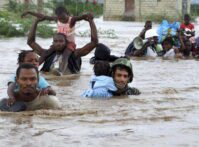-
Shreya Mitra & Joe Mulligan, Resilience Compass
Lessons From Kibera on Risks and Resilience for the New Urban Agenda
October 20, 2016 By Wilson Center Staff
“By 2050 the world urban population is expected to nearly double, making urbanization one of the 21st century’s most transformative trends.” -Draft “Quito Declaration on Sustainable Cities and Human Settlements for All,” September 2016
This week, heads of state will formally adopt a “New Urban Agenda” in Quito, Ecuador. It will be the outcome document agreed upon at the third United Nations Conference on Housing and Sustainable Urban Development (Habitat III) that aims to set the narrative for development in human settlements for the next 10 to 20 years.
The New Urban Agenda, following on the heels of the Post-2015 Development Agenda, will seek to strengthen the links between urbanization and sustainable development. Most urban growth is after all expected in the developing world, in the expanding cities and informal settlements of Africa and Asia. A significant proportion of this urban expansion is occurring in fragile and conflict-affected contexts. Here, the risks of unplanned and poorly managed urbanization resulting in inequitable, exclusionary, fragmented, and violent cities are significant. Cognizant of this, the draft outcome document calls for special attention to cities in countries facing situations of conflict and those affected by natural and man-made disasters.
In 2015 and 2016, International Alert and the Kounkuey Design Initiative (KDI) have been working together to examine the interaction of environmental and conflict risks in Kibera, Nairobi’s largest informal settlement, and the impact of three major housing and infrastructure initiatives on building future resilience.
Continue reading on Resilience Compass.
Sources: Resilience Compass, United Nations.
Photo Credit: Kibera, Kenya, 2008, courtesy of flickr user antonella sinopoli.
 A Publication of the Stimson Center.
A Publication of the Stimson Center.






